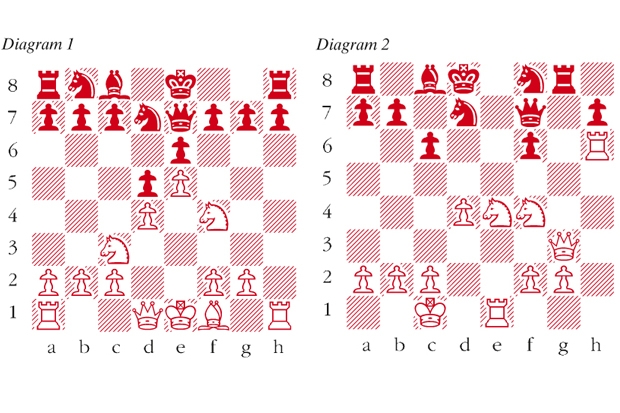The last great tournament to have been completed before the outbreak of war in 1914 was St Petersburg, which saw a sensational triumph by the world champion Emanuel Lasker, ahead of Capablanca, Alekhine, Tarrasch and Marshall. It is a testament to the political naivety of both players and organisers that an event was set for Mannheim in Germany in August 1914, organised by the German Chess Federation and open to many foreign luminaries. When war broke out the tournament had to be abandoned, and various foreign dignitaries were interned in Germany. After 11 rounds of the 17 envisaged, Alekhine was in the lead, ahead of Vidmar, Spielmann, Breyer, Marshall, Reti, Janowski, Bogolyubov and Tarrasch among others.
There is something quite charming about the willingness of the Deutscher Schachbund to invite a host of players from countries with which they would soon be at open war, and the readiness of those players to accept.
This week a brisk win by Alekhine against one of the lesser lights, and a neat endgame, also by the former world champion.
Alekhine-Fahrni; Mannheim 1914; French Defence
1 e4 e6 2 d4 d5 3 Nc3 Nf6 4 Bg5 Be7 5 e5 Nfd7 6 h4 Here Alekhine writes that this sacrifice had been played previously by the ingenious Paris amateur Eugene Chatard and also by the Viennese master Albin. Since then the name Albin or Alekhine-Chatard Attack has adhered to this line. But this is not the whole picture. 6 … Bxg5 7 hxg5 Qxg5 8 Nh3 In fact, the earliest example I can find of this sacrificial variation is a game won by the British lady player Mrs Fagan against Richmond, London 1896. That game continued 8 Nf3 Qe7 9 Bd3 a6 10 Qd2 c5 11 dxc5 Nc6 12 0-0-0 Qxc5 13 Qg5 when White went on to win. The ‘ingenious’ Mrs Fagan deserves far more credit than she has hitherto been given for her invention. 8 … Qe7 9 Nf4 (see diagram 1) 9 … Nf8 This is irredeemably passive and Alekhine now romped home with one of his trademark violent attacks. Best is 9 … Nc6 10 Qg4 Nxd4 11 0-0-0 Nf5 12 Nfxd5 as in Aronian-Luther, Germany 2001. 10 Qg4 Threatening both 11 Qxg7 and 11 Nxd5. The latter theme continues to plague Black for several moves. 10 … f5 11 exf6 gxf6 12 0-0-0 c6 13 Re1 Kd8 It is most unpleasant to have one’s king running around in the centre without the protection which castling would have afforded. But after 13 … Bd7 Alekhine claimed that 14 Nfxd5 would once again have been to the key to victory. 14 Rh6 e5 15 Qh4 Nbd7 16 Bd3 e4 17 Qg3 Once more with the threat of 18 Nxd5. If now 17 … Qd6 18 Bxe4 dxe4 19 Rxe4 is overwhelming. 17 … Qf7 18 Bxe4 dxe4 19 Nxe4 Rg8 (see diagram 2) 20 Qa3 Penetrating Black’s position from a new angle. 20 … Qg7 21 Nd6 If now 21 … Qxh6 22 Nh7+ wins. 21 … Nb6 22 Ne8 Qf7 23 Qd6+ Qd7 24 Qxf6+ Black resigns 24 … Qe7 25 Qxe7 is mate.
Raymond Keene
On the brink | 5 June 2014

issue 07 June 2014




Comments